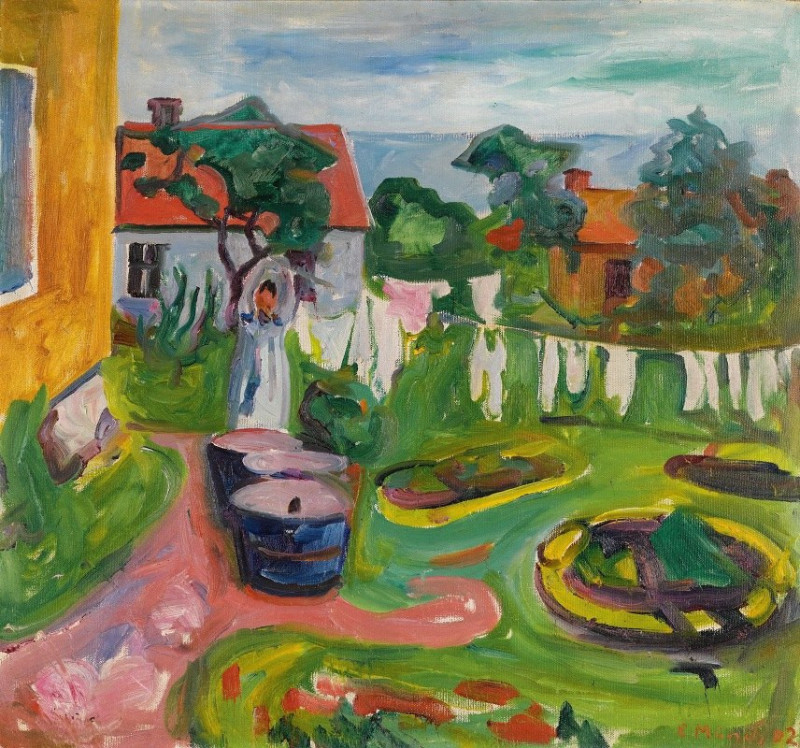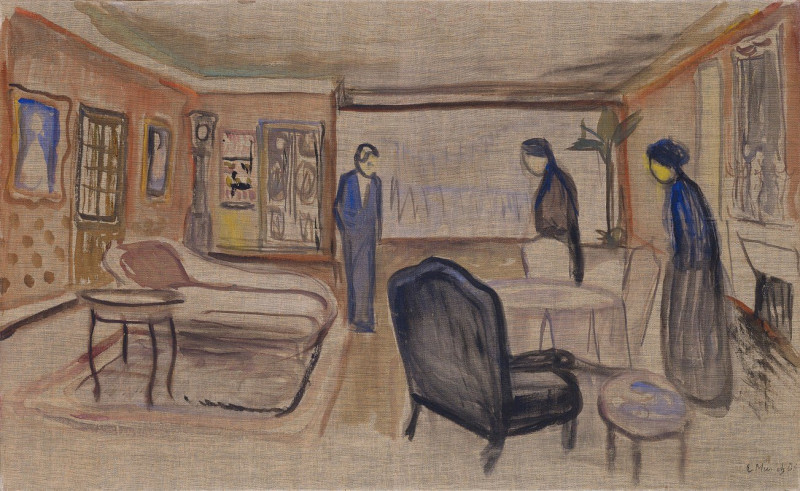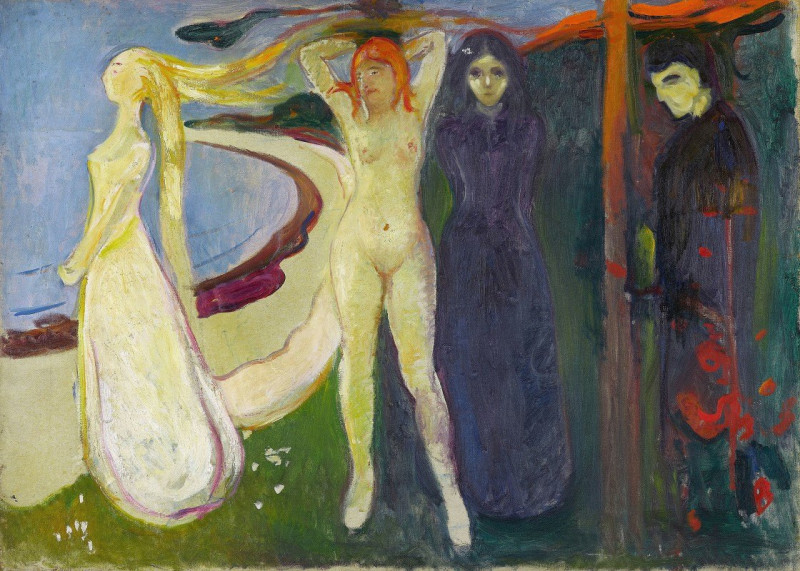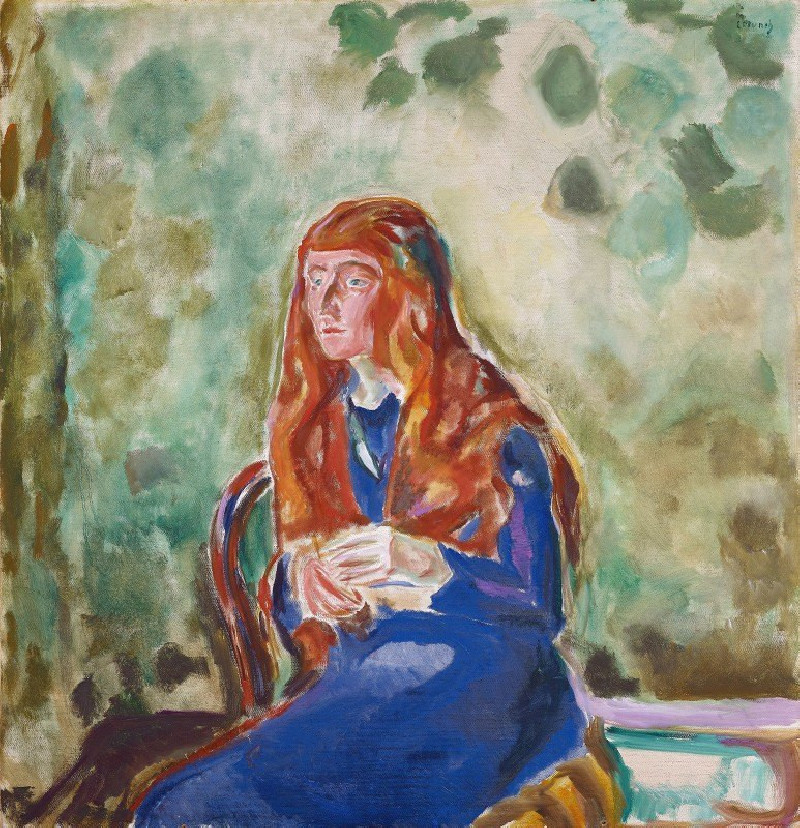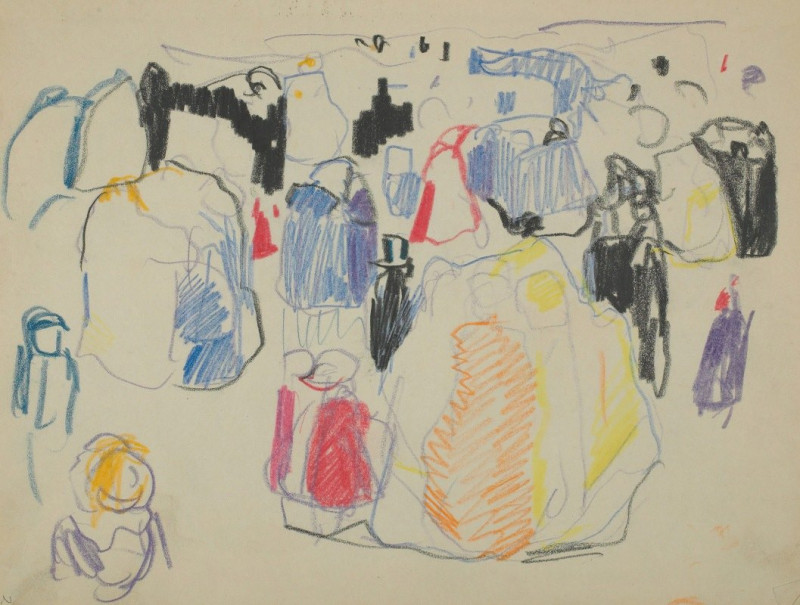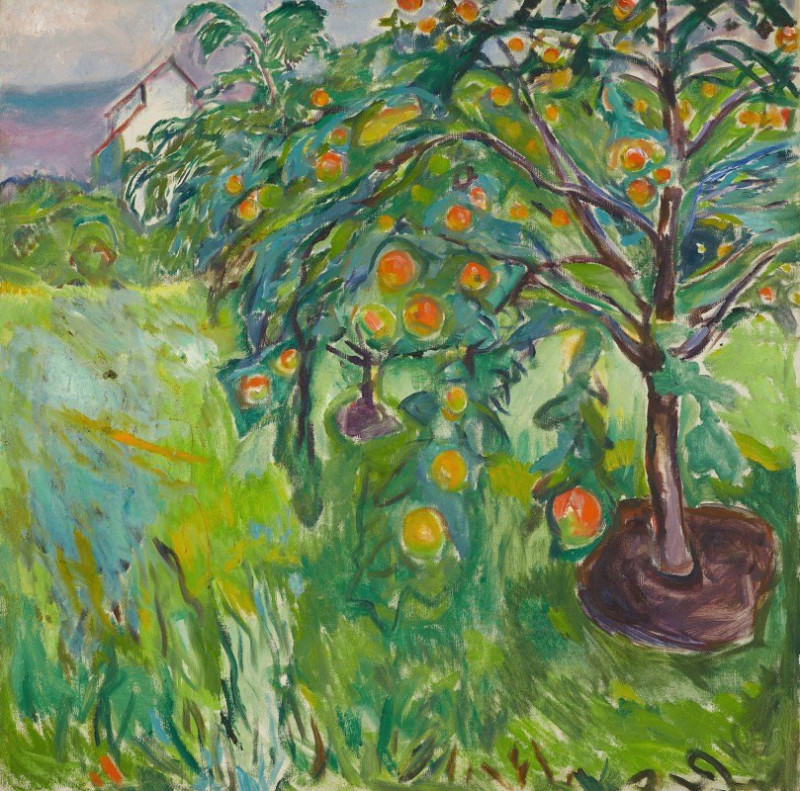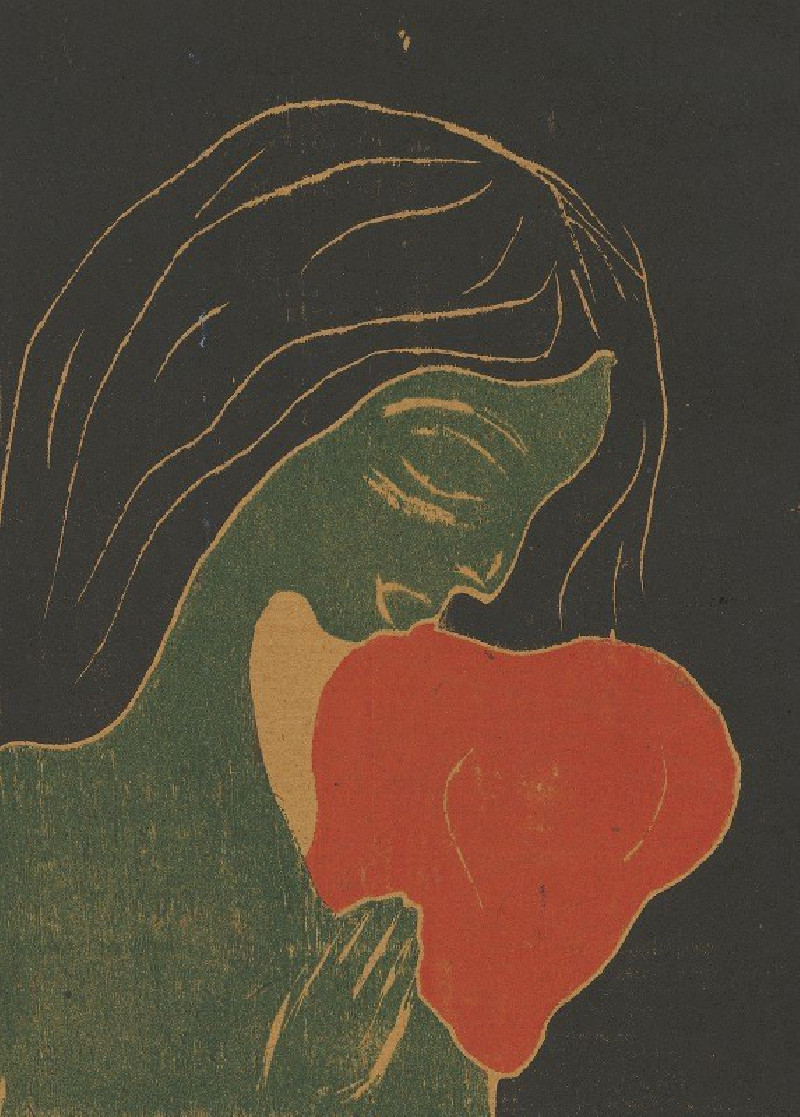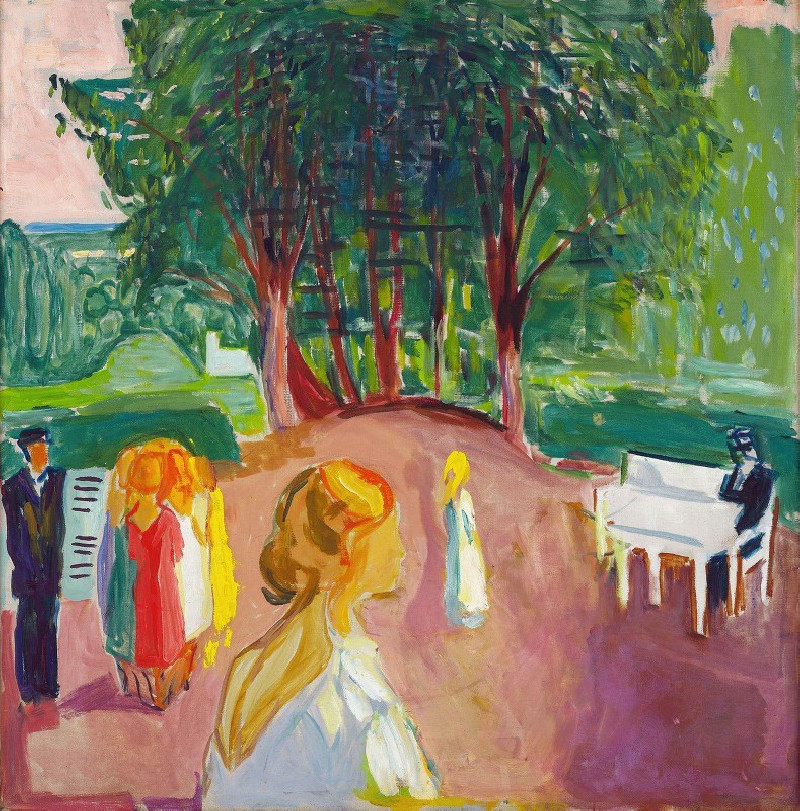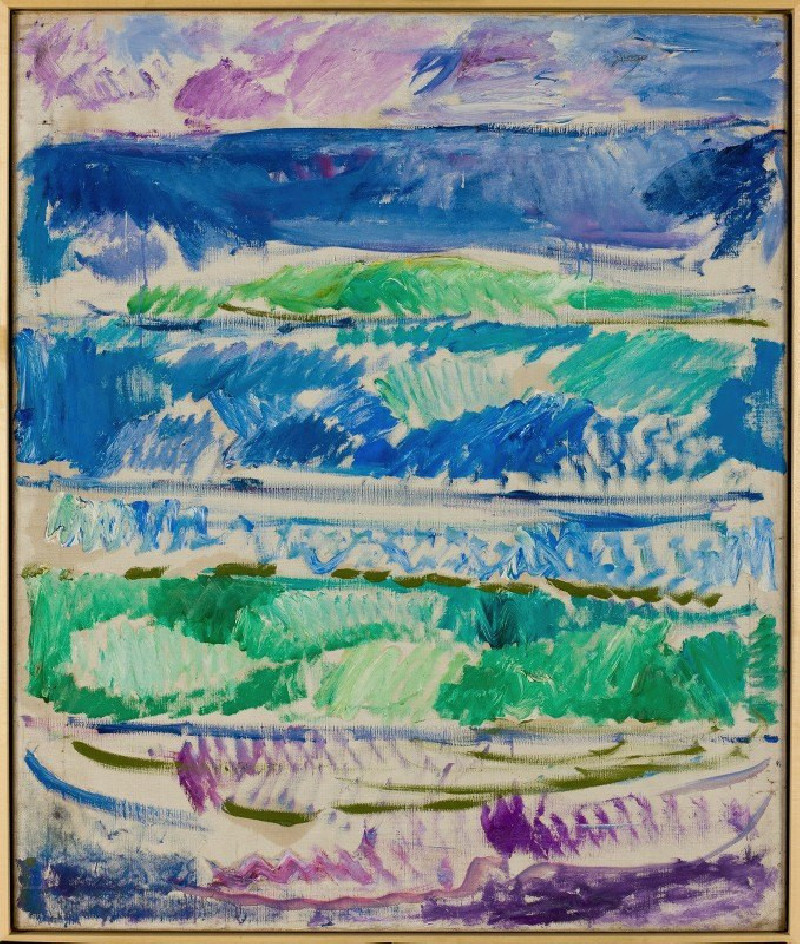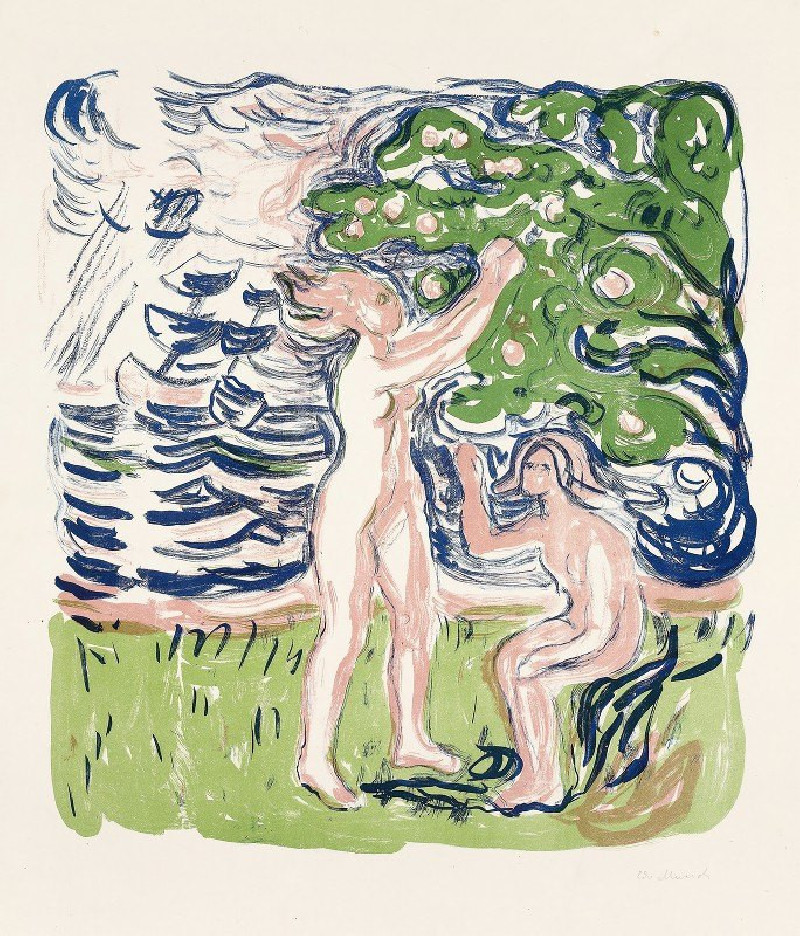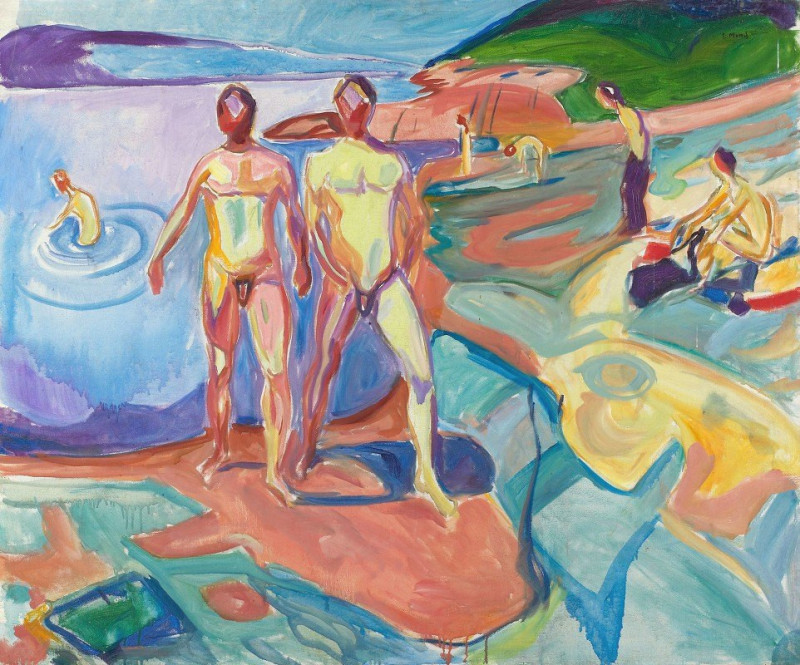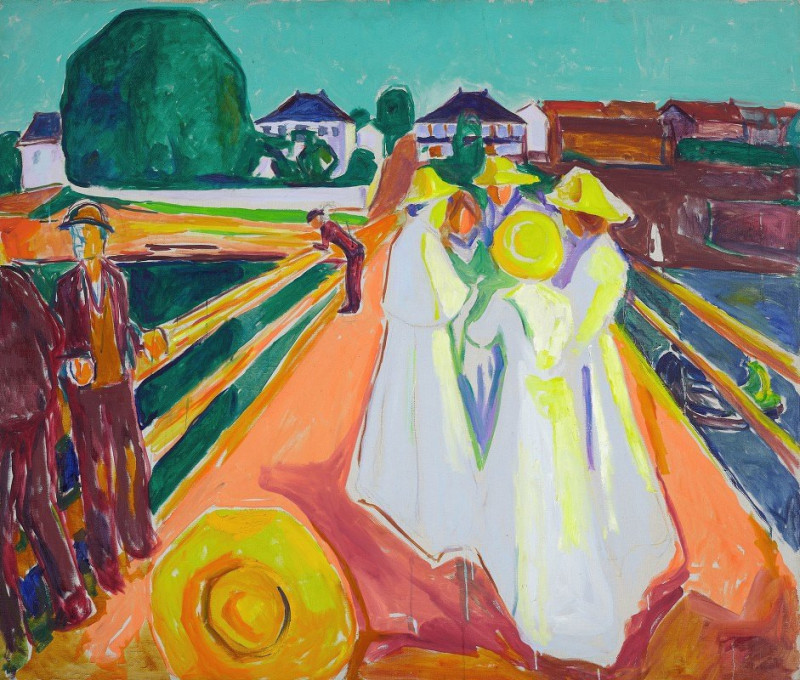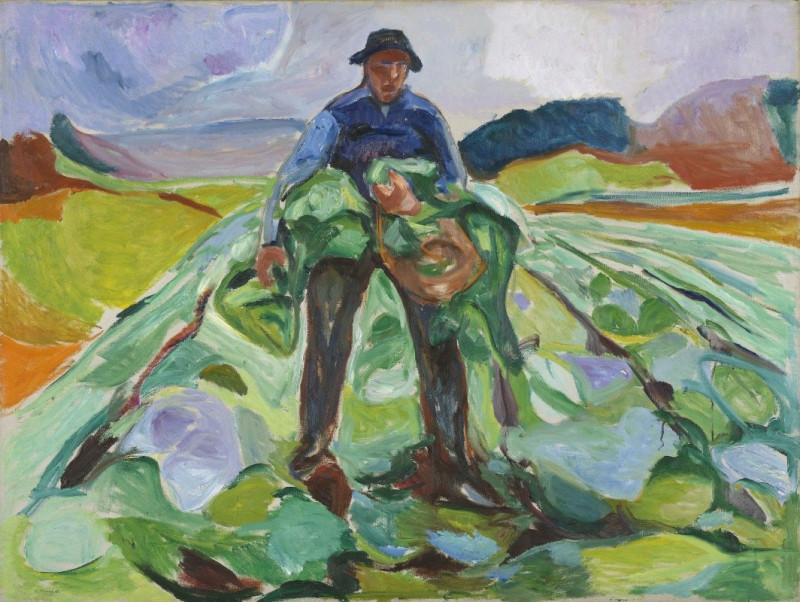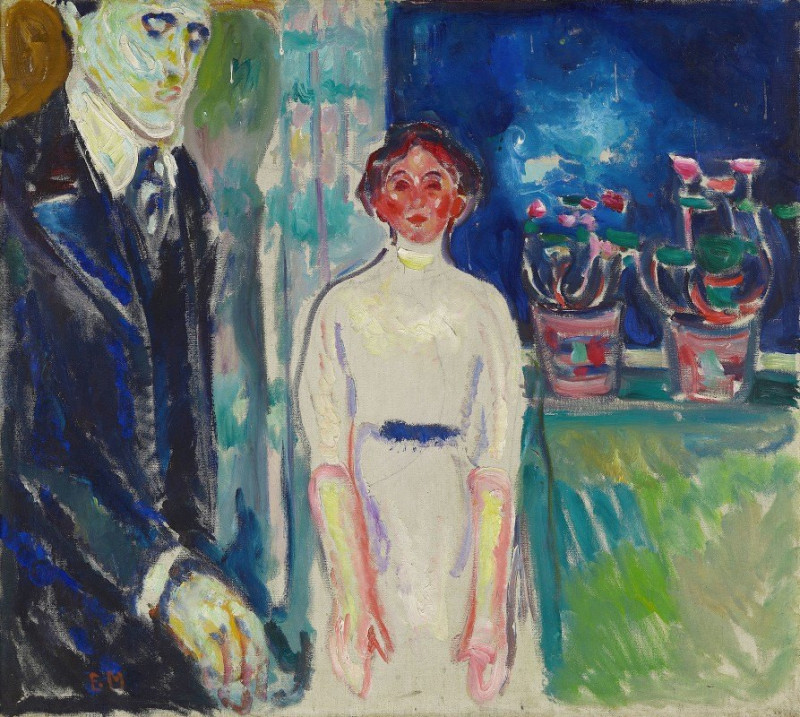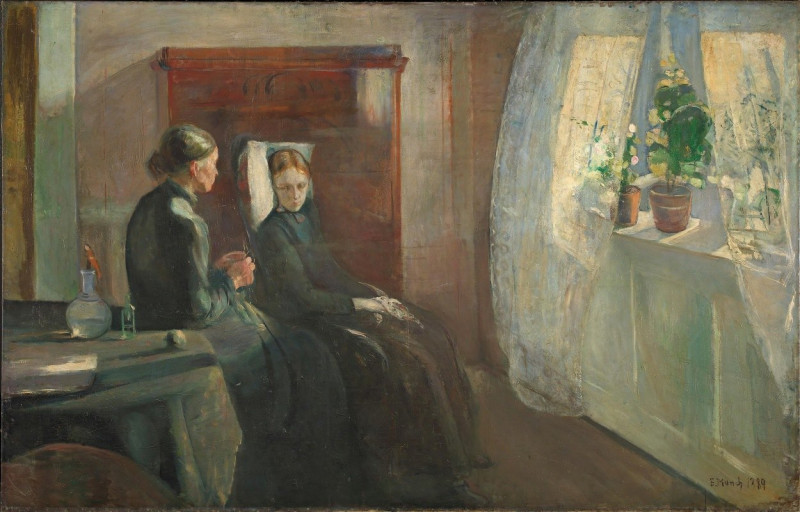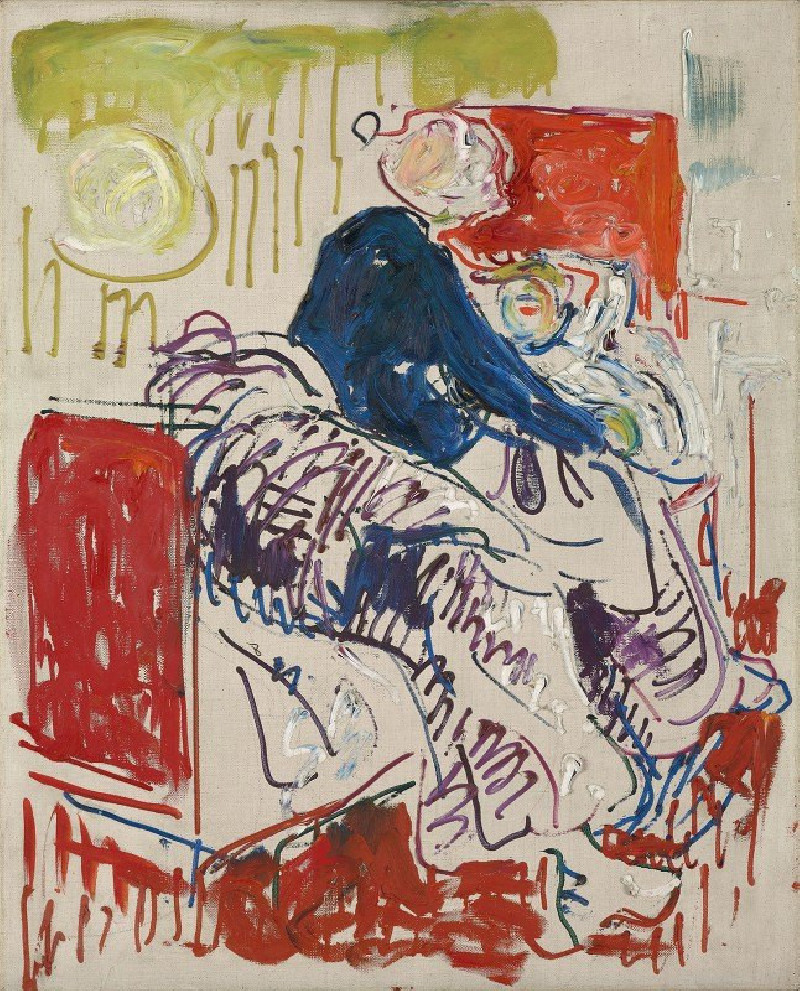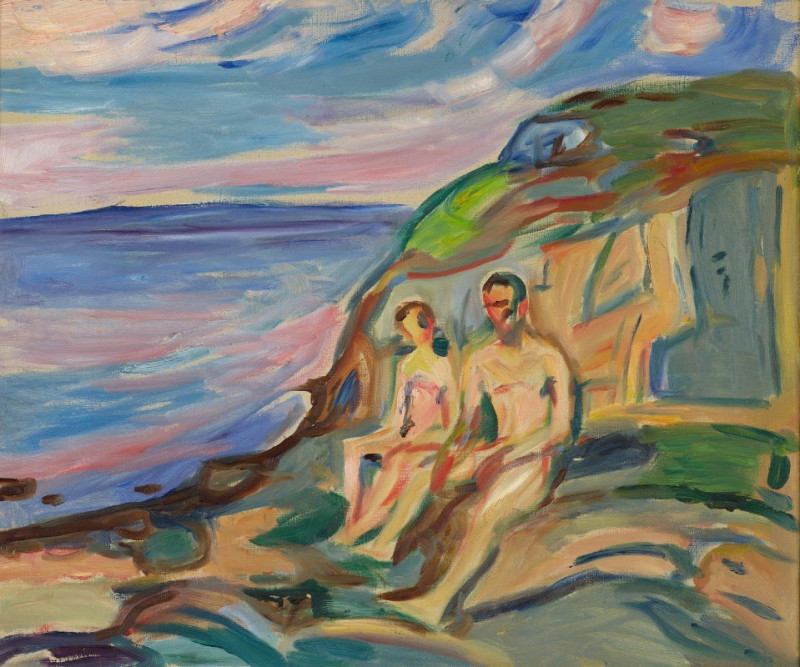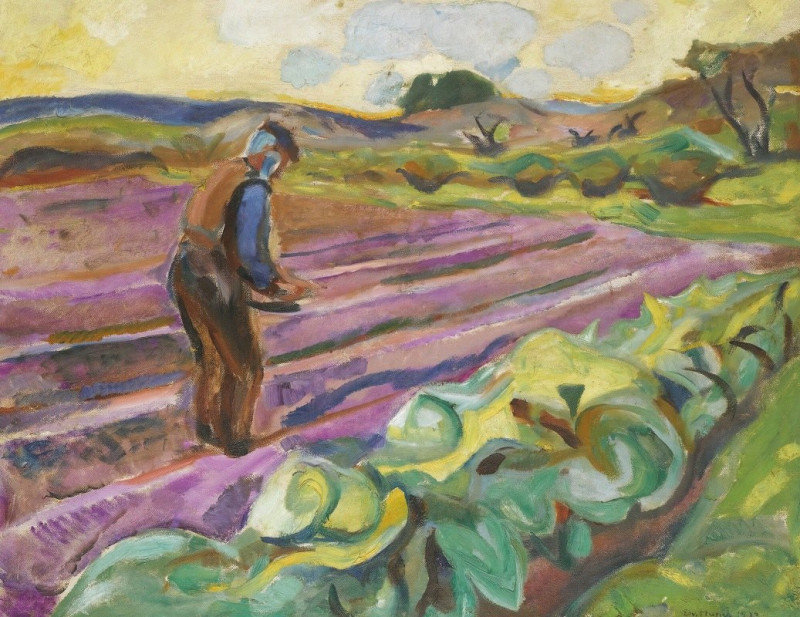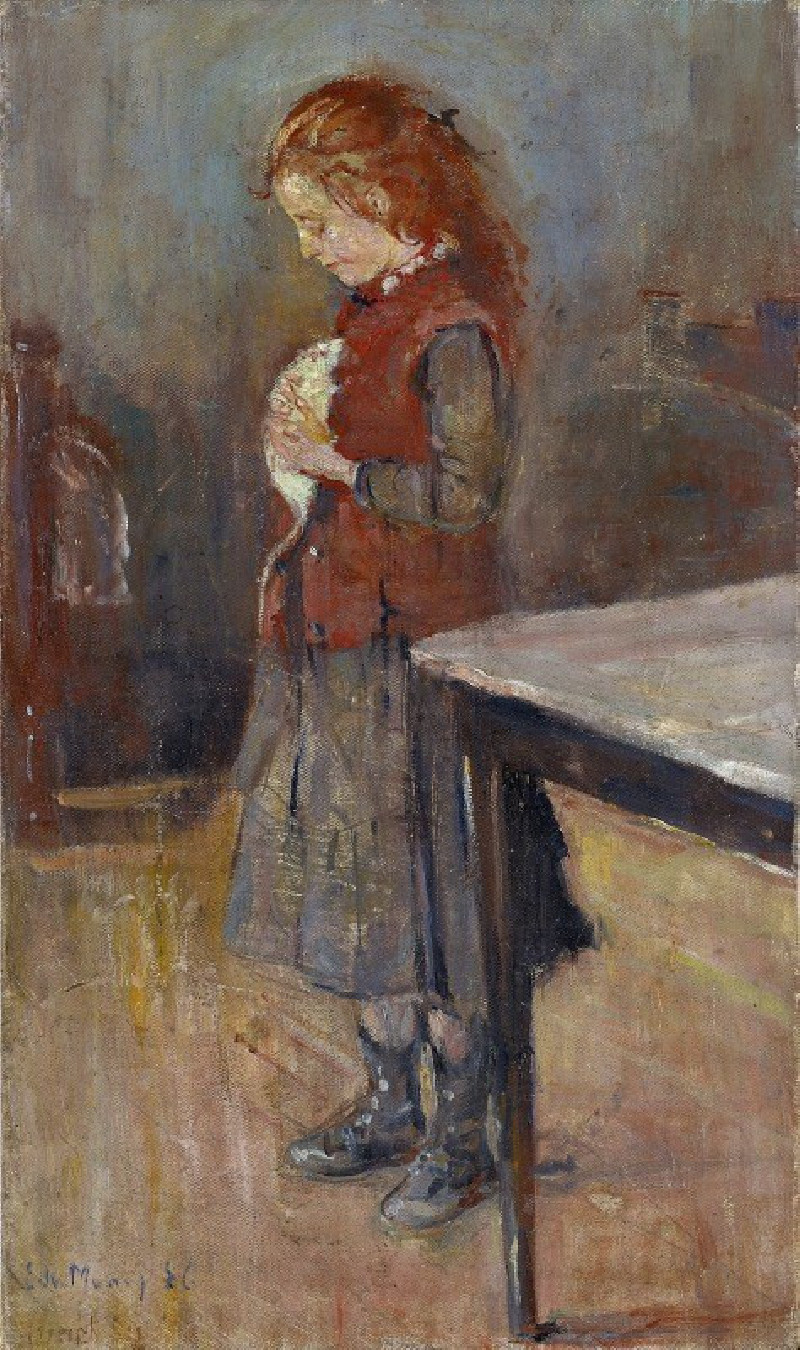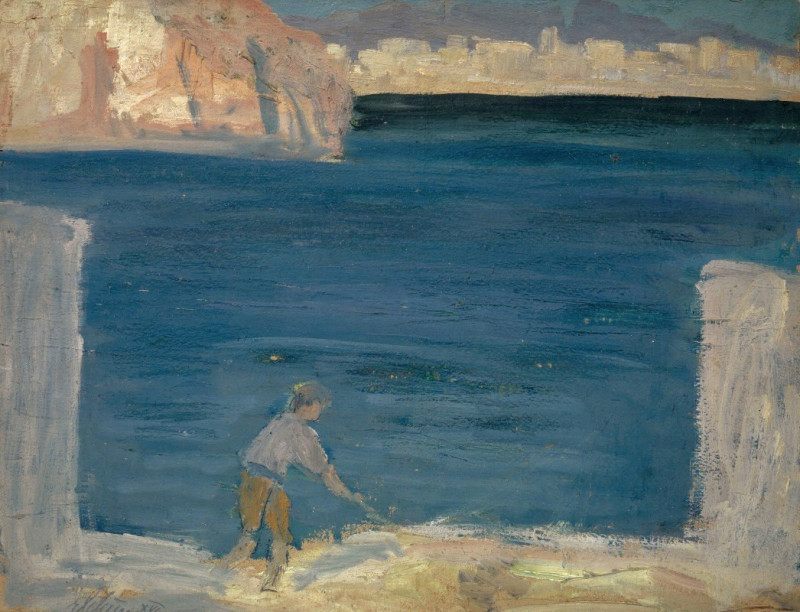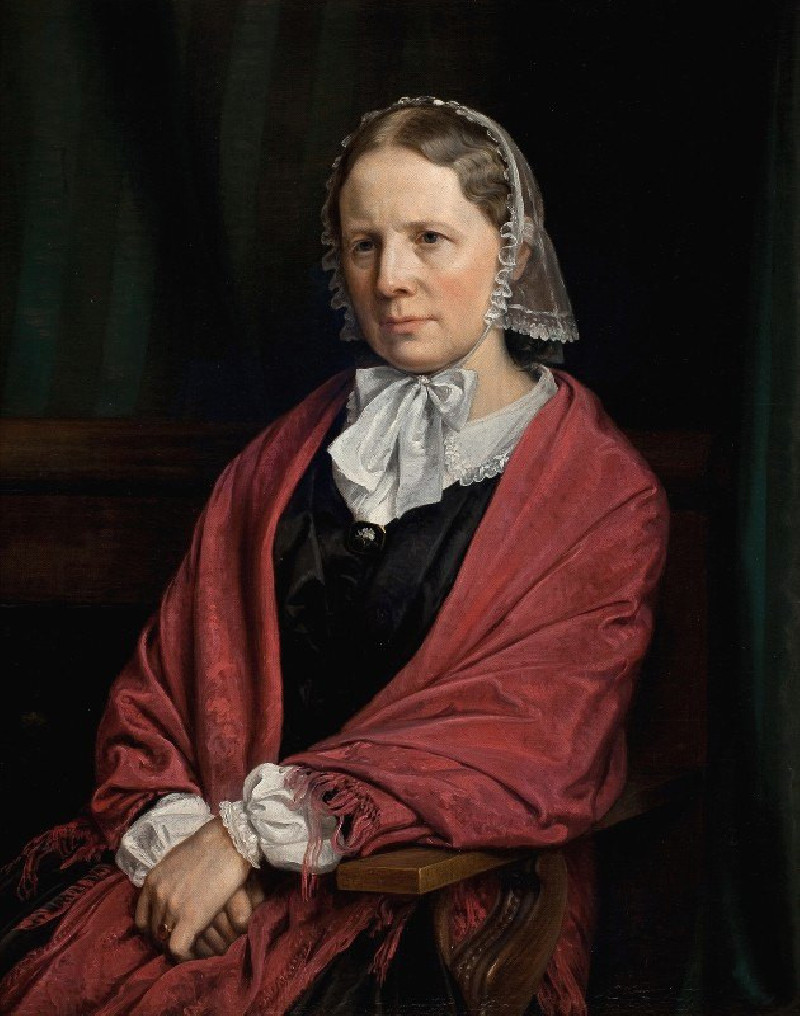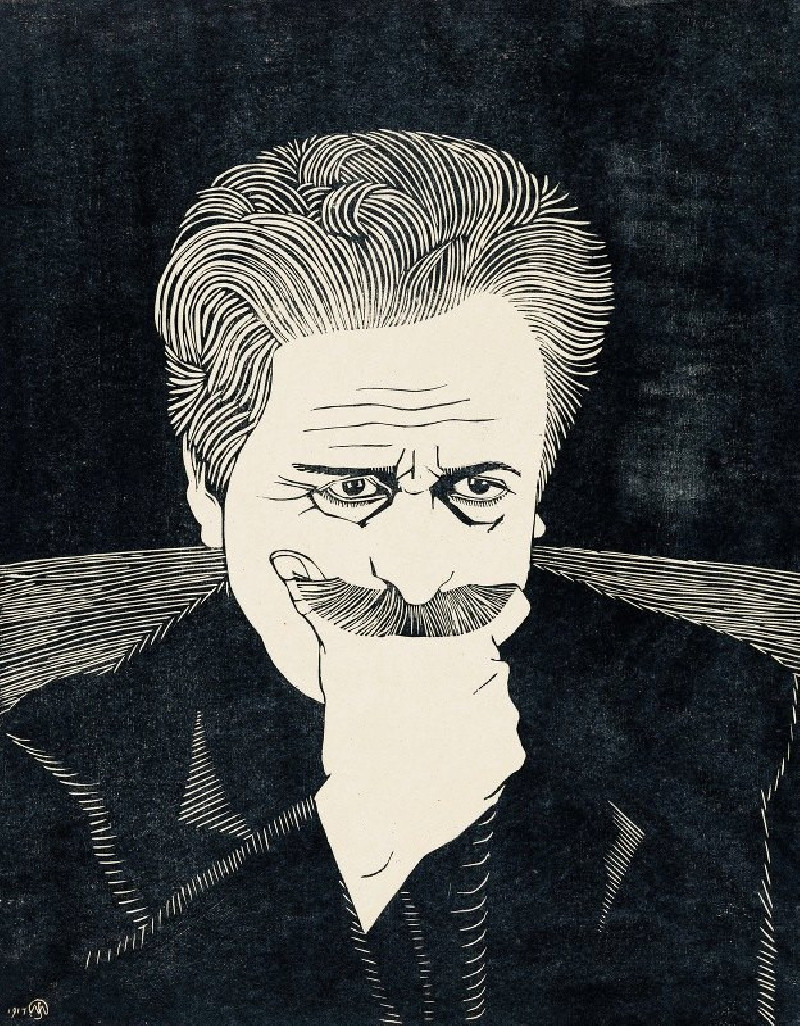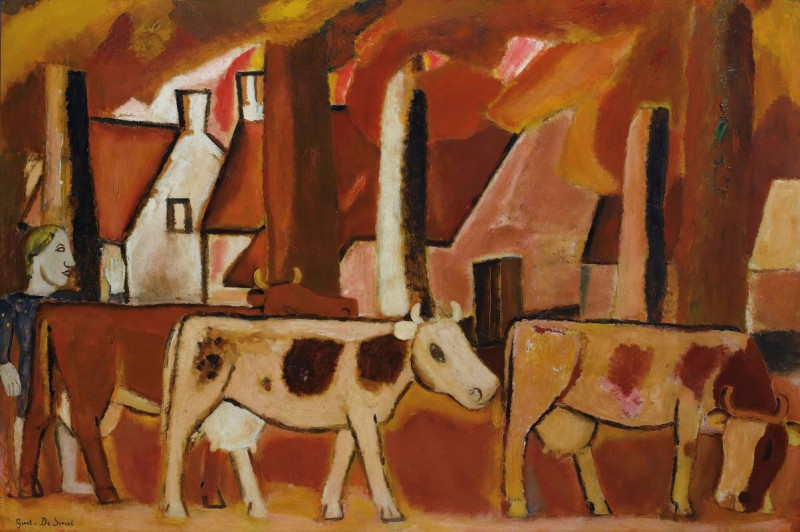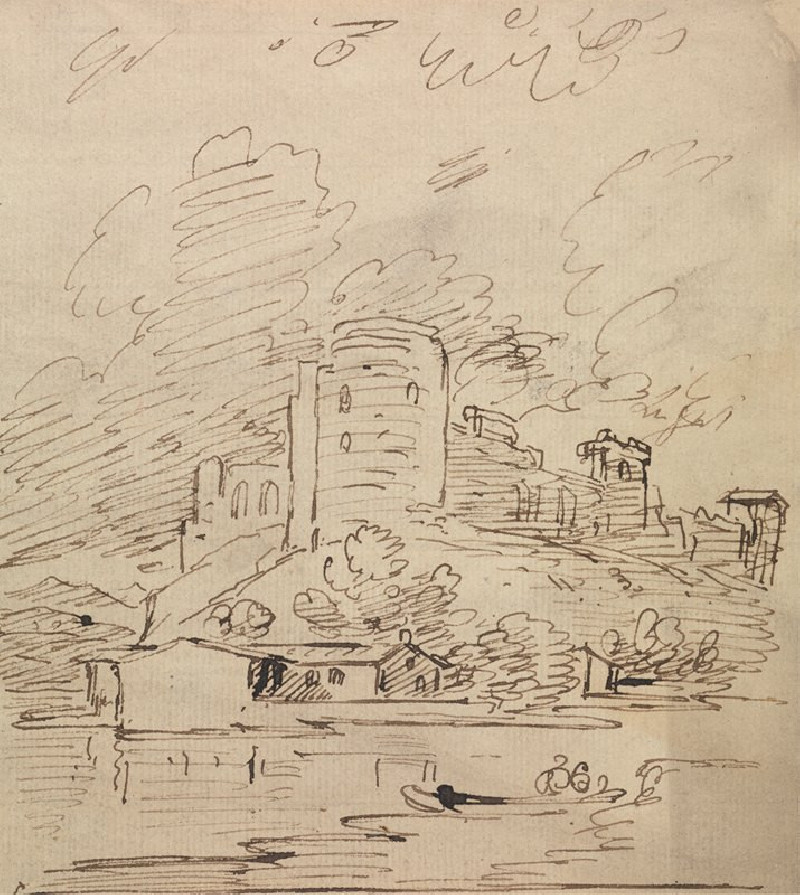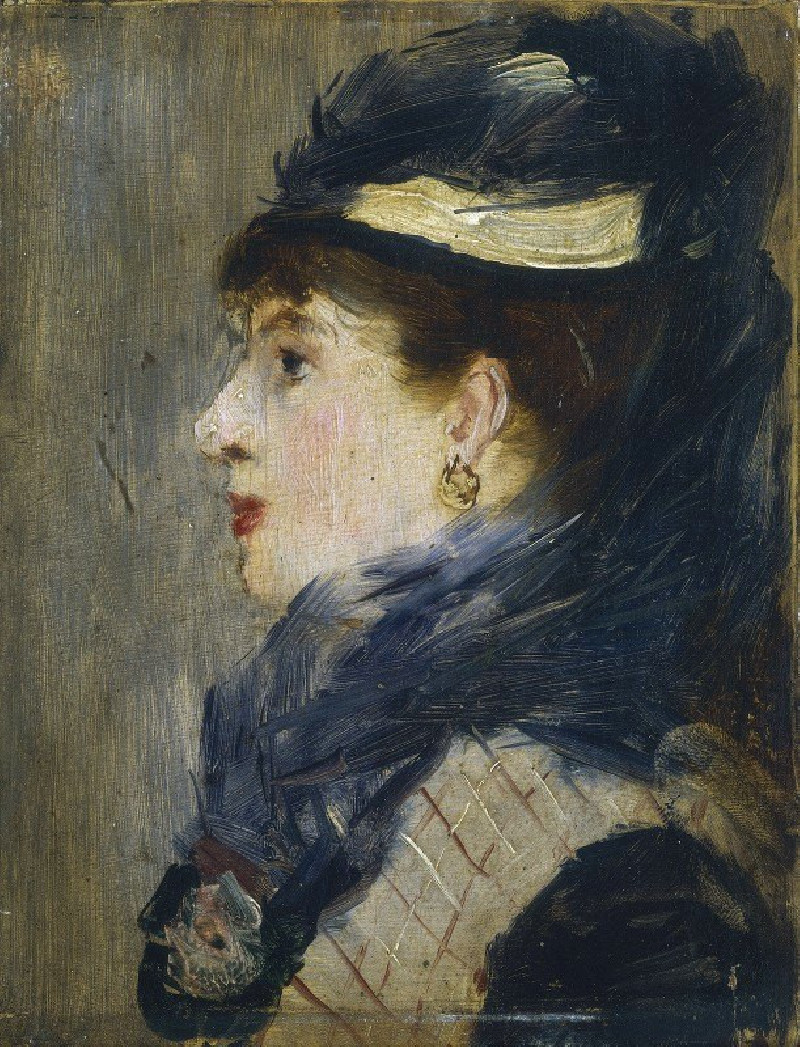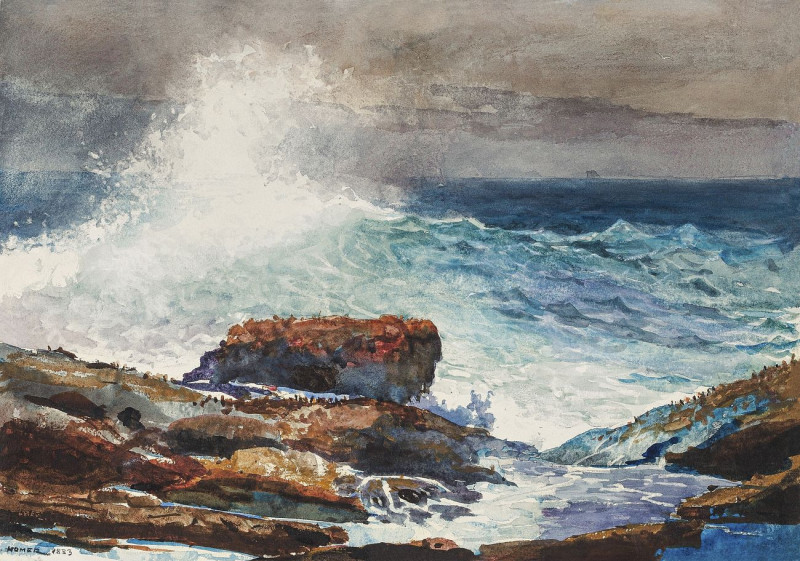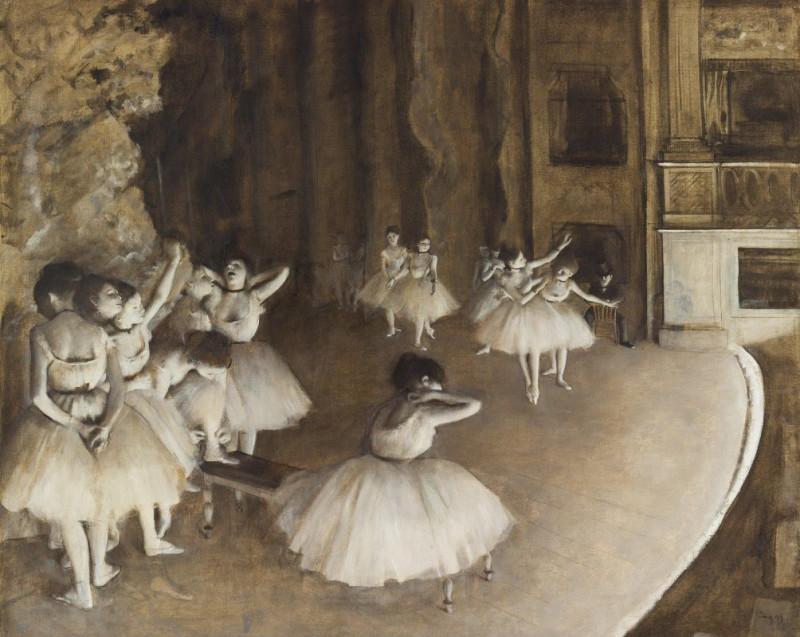The Day After (1894)
Technique: Giclée quality print
Recommended by our customers
More about this artwork
"The Day After" by Edvard Munch is a powerful and evocative oil painting, depicting a woman lying listlessly in bed with an evidently exhausted or perhaps inebriated demeanor. The setting of the painting hints at a narrative of over-indulgence or perhaps despair from the night before, suggested by the presence of empty bottles and glasses on the bed beside her. This woman, dressed in a white gown, sprawls across the disheveled sheets of a dark wooden bed, her arm dangling off the side and her face turned sideways with eyes closed.Munch's use of somber, muddy colors and broad, expressive brushstrokes contribute to the lethargic and melancholic atmosphere of the painting. His style captures not just a physical scene, but a deeper psychological portrayal of exhaustion or surrender, possibly reflecting themes of vulnerability, emotional turmoil, or aftermath of excess.This painting aligns with Munch’s fascination with human emotion and the darker sides of human experience, exploring how physical states can reflect inner feelings and struggles. The portrayal in "The Day After" invites viewers to contemplate the circumstances and emotional states surrounding this quiet moment of recovery or resignation.
Delivery
Returns
Edvard Munch (12 December 1863 – 23 January 1944) was a Norwegian painter. His best known work, The Scream (1893), has become one of Western art's most iconic images.
His childhood was overshadowed by illness, bereavement and the dread of inheriting a mental condition that ran in the family. Studying at the Royal School of Art and Design in Kristiania (today's Oslo), Munch began to live a bohemian life under the influence of the nihilist Hans Jæger, who urged him to paint his own emotional and psychological state ('soul painting'); from this emerged his distinctive style.



